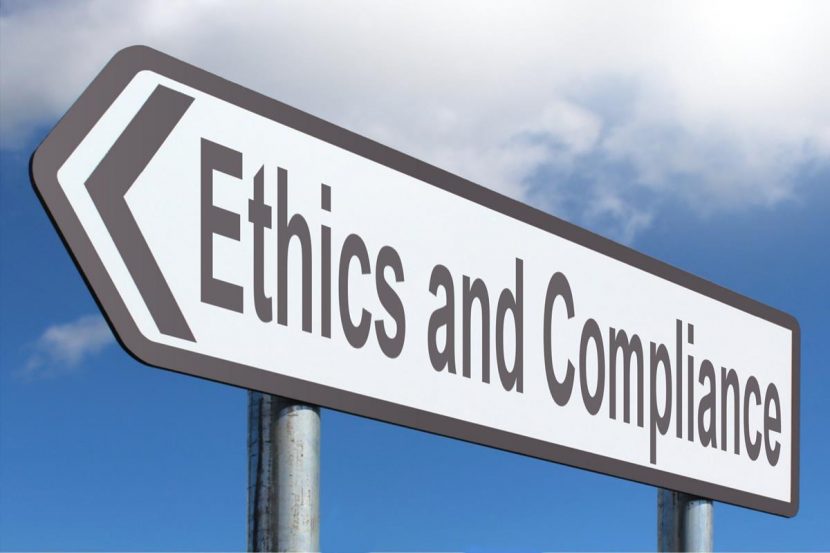Fuente:The FCPA Blog
Behavioral ethics is a well-known field of social science which shows how — due to various cognitive biases — “we are not as ethical as we think.” Behavioral compliance and ethics (which is less well known) attempts to use behavioral ethics insights to develop and maintain effective compliance programs. In this post I explore some of the ways that this can be done.
Behavioral C&E (Compliance & Ethics) should be viewed on two levels. The first could be called specific behavioral C&E lessons, meaning enhancements to the various discrete C&E program elements — e.g., risk assessment, training — based on behavioral ethics insights. Several of these are discussed below.
The second — and more general — aspect of behavioral C&E is the above-mentioned overarching finding that we are not as ethical as we think. The importance of this general lesson is based on the notion that the greatest challenges to having effective C&E programs in organizations is often more about the “will” than the “way.”
That is, what is lacking in many business organizations is an understanding that strong C&E is truly necessary. After all, if we are as ethical than we think, then effective risk mitigation would be just a matter of finding the right punishment for an offense and the power of logical thinking would do the rest. Behavioral ethics teaches that that assumption is ill-founded.
Risk assessment. There are two main ways that behavioral C&E can enhance risk assessment. One is helping those involved in assessment efforts have a better understanding of behavioral risks — meaning an understanding based on behavioral science. That might be considered a “substantive” use. The other is more procedural in nature — using what science tells us about human behavior to design better internal procedures.
Studies relevant to both aspects of risk assessment have shown that individuals tend to optimistically predict their own future moral conduct but accurately predict the less moral future behavior of others, For those conducting risk assessments, the path suggested by this research is clear: to the maximum degree possible, one should structure the inquiry so that it is not seen as asking about the interviewee’s own risks but those of others. And, in providing information about others, at least in the aggregate, employees of an organization will likely be helping you analyze risks that in fact involve themselves.
Training and other communications. Several behavioral ethics studies show that people are more accepting of wrongdoing if it develops gradually than if it occurs suddenly. This is commonly known as a “slippery slope,” and these studies show is that it is a significant risk factor. The outcomes of the slippery slope experiments should be discussed in training, at least at a high-level — particularly when training managers. It can be presented as part of broader message that managers need to be not just personally honest but alert to ethically perilous situations.
Research also shows that simply making ethics more prominent — that is, reminding people about it — can impact behavior. Moreover, this works best if the reminder is done as close as possible to the time that someone is making a decision. These experiments can be very helpful when it comes to making training and other communications more effective.
Just-in-time C&E communications have, in some ways, been around for a long time but only to a very limited degree. Opportunities for new or enhanced just-in-time communications exist for many C&E areas including (but definitely not limited to): anti-corruption — before interactions with government officials and third-party intermediaries; competition law — before meetings with competitors (e.g., at trade association events); insider trading/Reg FD — during key transactions, before preparing earnings reports; protection of confidential information — when receiving such information from third parties pursuant to an NDA; conflicts of interest –around procurement decisions; accuracy of sales/marketing — in connection with developing advertising, making pitches; and employment law — while conducting performance reviews.
Enforcement. Research relating to “motivated blindness” — which derives from a psychological concept which describes the tendency for people to easily miss information that contradicts what is in their own best interest — is relevant to two distinct elements of a C&E program: resolution of conflict of interest issues and decisions involving possible investigations of and discipline for violations of legal or ethical standards. Focusing on the latter point, this research underscores the importance of the Sentencing Guidelines expectation that organizations discipline employees not only for engaging in wrongful conduct but “for failing to take reasonable steps to prevent or detect” wrongdoing by others — something relatively few companies do well (and some don’t do at all).
To meet this important expectation, companies may wish to consider taking the following measures:
- Build the notion of supervisory accountability into their policies — e.g., in the managers’ duties section of a code of conduct;
- Speak forcefully to this issue, and the underlying behavioral science research, in C&E training and other communications for managers;
- Train investigators on the notion of managerial accountability and address it in the forms they use so that they are required to determine in each case whether a manager having been asleep at the switch led to the violation in question;
- Publicize (in an appropriate way) that managers have in fact been disciplined for supervisory lapses;
- Have auditors take these requirements into account in their audits of investigative and disciplinary records.












